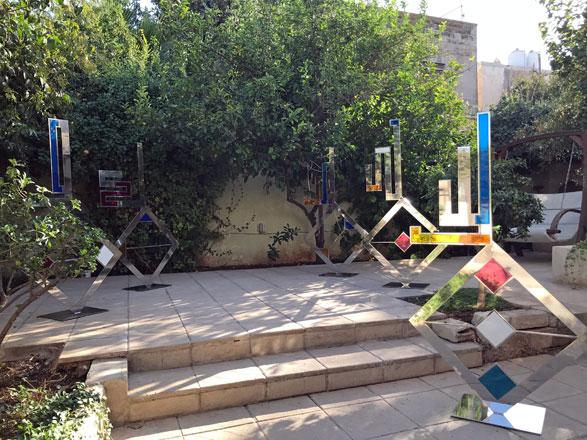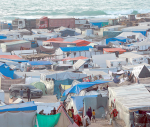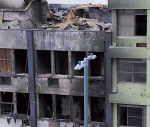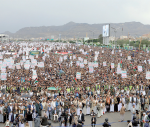You are here
T-Serai art installation draws inspiration from tent traditions of MENA region
By JT - Sep 26,2019 - Last updated at Sep 26,2019
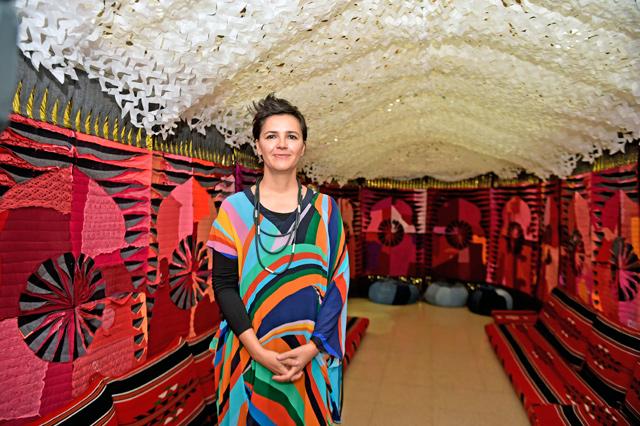
Artist and architectural historian Azra Aksamija is seen in her textile art installation at Sharjah Museum for Islamic Civilisation in the UAE (Photo courtesy of SMIC)
AMMAN — T-Serai, a textile art installation, which highlights humanitarian causes including refugees, climate change and textile overproduction, opened its doors in the United Arab Emirates on Wednesday.
The exhibition arrived at its temporary home at Sharjah Museum for Islamic Civilisation (SMIC) and will remain open until December 7, according to a statement from the organisers.
The textile art installation takes the form of a portable cultural shelter inspired by the tent traditions of the MENA region and is made of modular tapestries using recycled clothes, according to the exhibition’s website.
Manal Ataya, director-general of Sharjah Museums Authority (SMA), inaugurated the exhibition in the presence of Dena Assaf, United Nations resident coordinator for UAE, and Reem Bin Karam, director of the NAMA Women Advancement Establishment, according to the statement.
T-Serai was conceived by the artist and architectural historian Azra Aksamija, director of the Future Heritage Lab (FHL) and Associate Professor at the Massachusetts Institute of Technology and developed by a team from FHL involving collaboration with students and refugee learners across the US, Europe and the MENA region, the statement said.
The T-Serai exhibition also includes FHL’s research on design inventions created by displaced Syrians in Al Azraq refugee camp in Jordan and was developed through a three-year research conducted by Aksamija in collaboration with students and academics from the German Jordanian University, the statement added.
T-Serai stands for the “Textile Systems for Engagement and Research in Alternative Impact”, an acronym that reflects a culturally sensitive approach to humanitarian intervention involving textile arts and crafts, read the statement.
Refugees’ inventions can teach others how to rethink humanitarian aid and to approach refugee assistance not just by providing makeshift shelters, but by creating civic spaces where crucial social healing, innovation, creativity and cross-cultural interactions can take place, Aksamija was quoted in the statement as saying.
Parallel productions of T-serai tapestries will later take place at Zaatari refugee camp in Jordan, she said.
Related Articles
AMMAN — “Needs create inventions,” stated Azra Aksamija, professor of art, culture and technology at MIT, who is one of the curators of the
AMMAN — Saturday marked the third official day of the Amman Design Week (ADW), offering a wide selection of learning and cultural opportunit
AMMAN — Wadi Finan Art Gallery created three solo exhibitions for Amman Design Week.The gallery showcases the exhibition by multimedia artis



